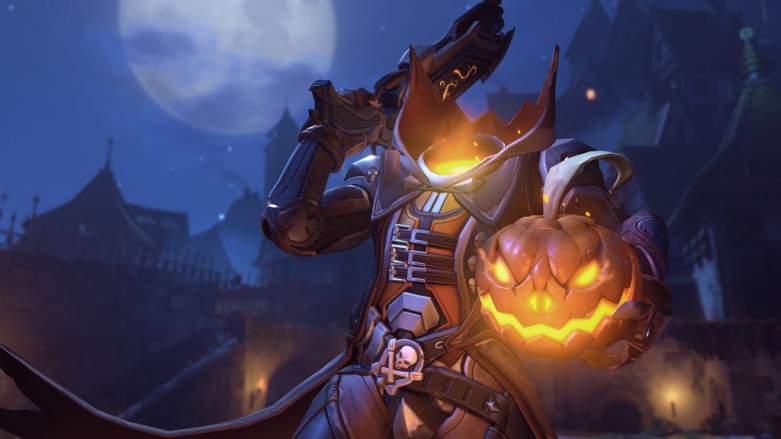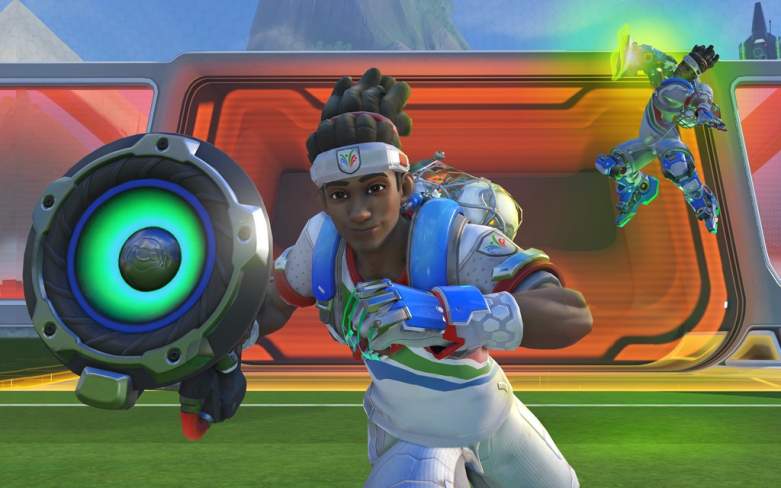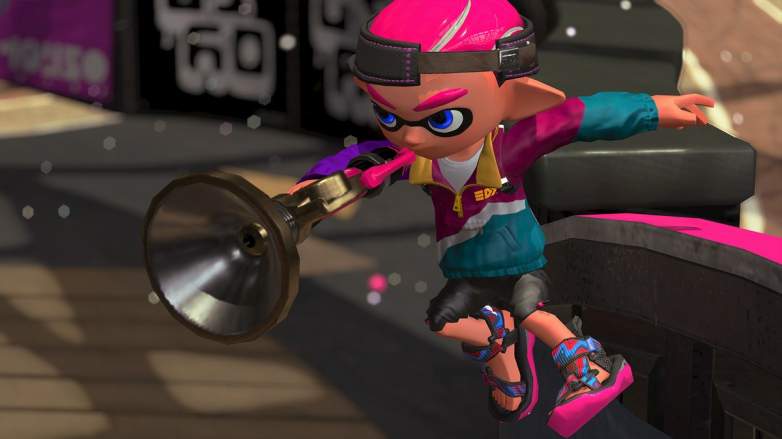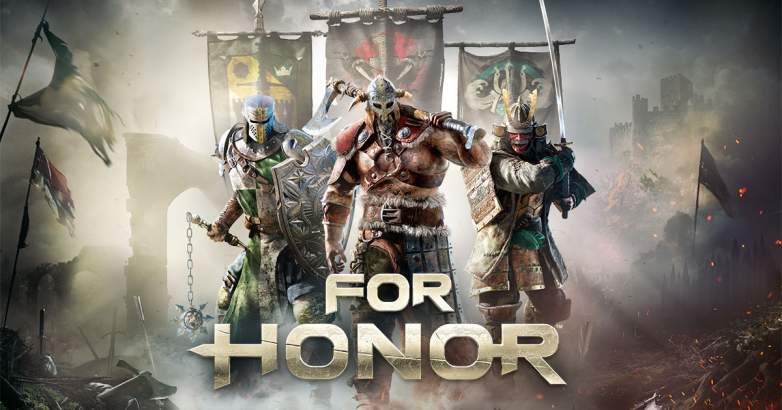
Historically, I have never been into multiplayer shooters. But thanks to games like Splatoon in 2015 and Overwatch in 2016, it’s become one of my favorite genres. Both games have eaten up hours of my time, and I do not regret a single one spent. Both games are expertly crafted, with Overwatch being one of the tightest yet most accessible shooters out there and Splatoon offering unique gameplay where you prioritize map coverage over kills. However, with the release of Splatoon 2, I’ll be playing that game a lot more than Overwatch. That’s because Splatoon 2’s progression system is way more rewarding than Overwatch’s will ever be.
Author’s Note: These opinions do not reflect Heavy as a whole.
First, let’s look at what happens when you level up in Overwatch. Whenever you level up, you acquire one loot box. These boxes contain four items of different rarities randomly given to the player for use with individual heroes; either an image you can spray on a wall in-game, a voice line, an emote, a highlight animation for play-of-the-games, or a brand new skin for your character. You can also earn coins as an item drop itself or whenever you receive a duplicate of an item, and can be used to buy whatever items you want if you have enough coins.
The problem with Overwatch’s rewards system is that these loot boxes are your only reward for leveling up, and they’re often a very disappointing reward. The vast majority of unlockable items are common sprays and voice lines, while the more desirable skins are rarely acquired. So if you’re opening up loot boxes, you’re going to see a lot of jpegs and mp3s. Also, the skins are so expensive and the coins you get are so stingily distributed that it takes ages to save up enough to buy whatever you want. On top of it all, you can also receive duplicates of items with only a thimbleful of coins to show for it.

Activision Blizzard Reaper’s Halloween skin
I’m at level 52 and I managed to snag five legendary skins from random drops and buy two more with saved-up coins, in addition to the four skins I received for pre ordering the game. However, people like video game critic Jim Sterling have gotten as high as level 33 and only received one legendary skin.
The only reason this reward system exists is to propagate the game’s microtransaction-based economy. You can buy more loot boxes without having to level up, with packs ranging from $1.99 for two boxes to $39.99 for 50. The more loot boxes you buy, the higher your chances are of acquiring that sweet skin of D.va as a bee.
The rewards system sticks religiously to the formula of most free-to-play games, frustrating you with lackluster random drops in order to seduce you into spending cash. It also creates an environment of those who have and those who have not, where players see people with cool skins and feel left out. This sort of psychological pummeling is the trade off for playing a free-to-play game. However, not only does Overwatch have the same psychological pummeling, but it’s also sold at full price. It’s a freemium game that’s not even free.
This leads to a reward system that simply isn’t rewarding. I brace myself for the blue and gray streaks of loot boxes indicating common items instead of getting excited for the purple and yellow ones of rare and legendary items respectively. I also feel kind of bad for wearing my cool legendary skins because I know I’m making others jealous and contributing to the haves and have nots environment. Because of how inconsistent the rewards are and the manipulation going on behind the scenes, there’s just no reward to keep playing the game other than for the sake of playing.

Activision BlizzardOverwatch Summer Games
This gets even worse with the introduction of timed events like the Summer Games, where rare and legendary skins are only available for a set period of time. They’re also only available from special kinds of loot boxes earned during the period, meaning that you cannot find them in the regular loot boxes you may have been saving up. Oh, and you can’t buy many of the items with coins.
Sure it’s all cosmetic and doesn’t technically affect the game if you have these skins, but cosmetics in any game are a big part of the experience as Sterling said in his video on Overwatch’s microtransactions. If game reviews neglect to mention the visual presentation and unlockable content of a game, readers would consider that a glaring omission. Many players of Dark Souls forgo optimized stats for armor to make a fashion statement, with the community of fashionistas so strong that the “Fashion Police” have become a Dark Souls legend.
To be fair, there have been some improvements made. Developer Blizzard are boosting the amount of coins received in boxes and cutting down on duplicate items according to Heavy.com’s report back in June. Also, you’re now able to buy this year’s Summer Games items as well as last year’s according to Forbes. However, the microtransaction economy and loot system is still firmly in place and it’s still a disheartening problem.

NintendoSplatoon 2’s Sploosh-o-matic, a weapon added as DLC
Now let’s look at what happens when you level up in Splatoon 2. When you level up in that game, you get access to a brand new weapon. You’ll still have to purchase it, but you do so with coins that are liberally given to you for each match you complete. You can also purchase clothing from stores that rotate stock daily, which not only change your appearance but give you passive stat boosts. To sweeten the deal even further, you can win tickets in Single Player and Salmon Run to redeem food items that increase the rate you gain coins and experience points. There are no microtransactions in sight.
The rewards given to you in Splatoon 2 are infinitely more rewarding. Now you get substantial rewards every single time you level up, not just when the game decides to reward you.
In addition, Splatoon 2 more frequently offers DLC than Overwatch. The biggest changes to Overwatch have been with brand new characters, which they have released four of since the game’s launch in May 24, 2016. There have also been three new maps for the main game modes as well as four arena maps. Splatoon 2 released three extra weapons and one map for Splatfests since its launch on July 21, 2017, and there are plenty more where that came from according to a datamine of the game. While the new weapons in Splatoon 2 may not be as substantial of an update as a brand new character, it makes the player come back way more frequently. The only reason I ever come back to Overwatch is to try out the new characters and game modes as well as maybe try in vain to snag the special event items before getting bored. With Splatoon 2 changing the game all the time, however incremental (or should I say INKremental), I’ll be joining that game way more.
I’m not saying Splatoon 2 is perfect. In fact, I do complain in my review that having only two maps in each period of rotation can be a bit exhausting. It also kind of sucks that we have to level up once more when we already did that in the first Splatoon. But that doesn’t stop the game from being consistently rewarding.

Ubisoft
Overwatch is lucky its community is as big as it is thanks to the sheer fun of its gameplay and loveable characters, because any other game with a microtransaction-based economy like that would have been quickly forgotten, especially one that also charged money up front. Just look at For Honor. The game was also a hyped, triple-A, $60 game with microtransactions, with the game offering a pitiful amount of “steel” every match to buy cosmetic items that could of course be more readily acquired through stumping up the cash. One Reddit user did the math and found that you would have to either spend $732 in steel to buy everything for the original 12 heroes or play the game for two and a half years to grind for the currency in matches if playing for one to two hours a day. That, combined with its rampant network connection problems at launch, has caused the game to lose 95 percent of its player base since its release on February 12, 2017.
I’ll continue to play and love both Splatoon 2 and Overwatch, but I’ll be going back to Splatoon 2 way more. We could debate all day which game is more rewarding to play in terms of gameplay, but it’s clear that Splatoon 2 offers more tantalizing rewards at more frequent rates than Overwatch. That will lead to Splatoon 2 getting much more staying power in the long run, because that’s way happens when you prioritize designing a game to be constantly rewarding over designing a game to monetize the player.
Now if only we could play Salmon Run whenever we wanted.

Comments
Splatoon 2’s Progression Is More Rewarding Than Overwatch’s